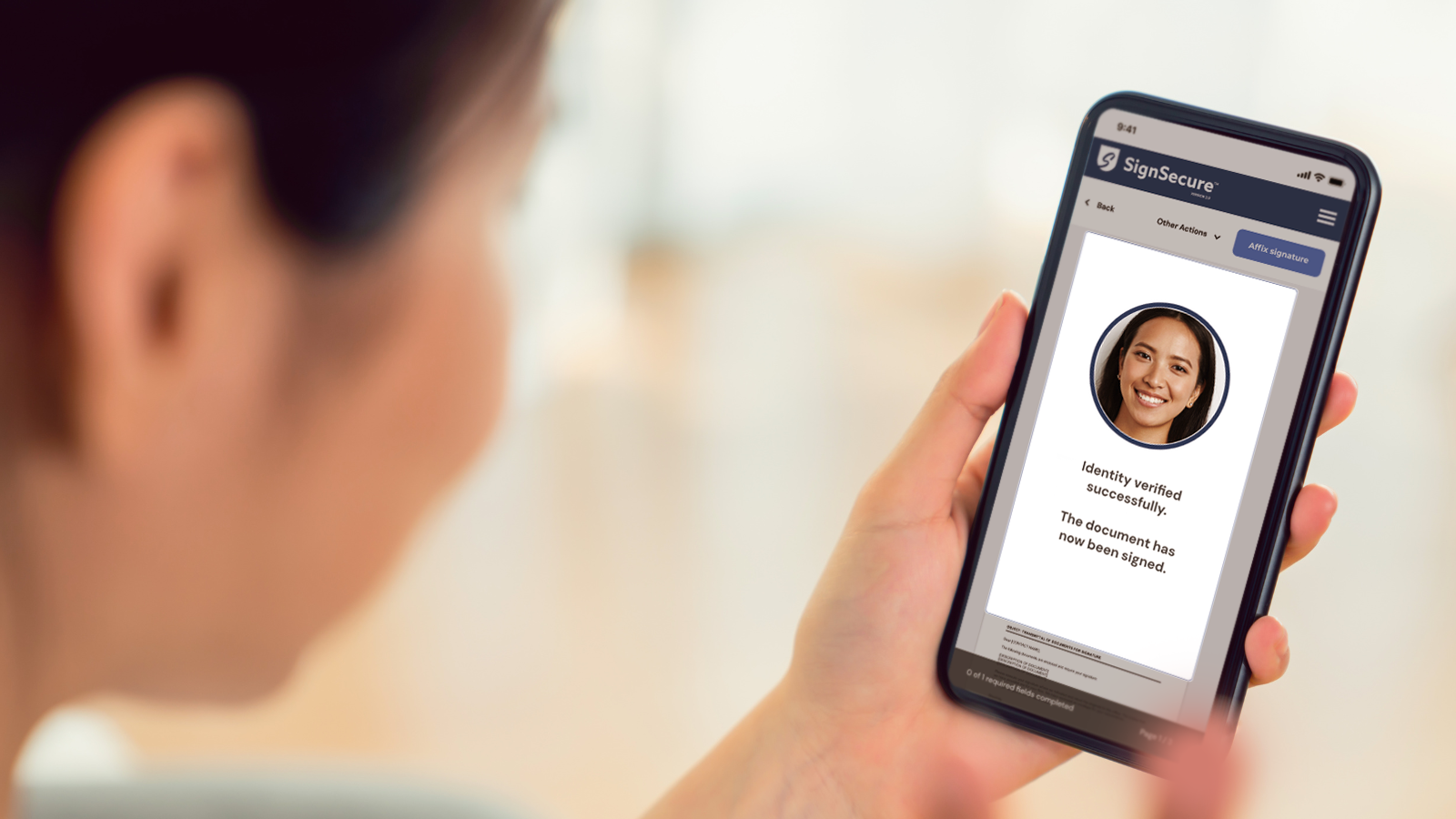
As more businesses adopt digital processes, electronic signatures are essential for managing agreements and contracts. Some solutions leverage decentralized, tamper-proof ledgers, ensuring transparency and security, but they can be convoluting. There’s also a simpler, highly effective way to verify signatures that don’t require technical know-how: facial recognition.
Many of these convoluting solutions can sound intimidating for many, especially those who aren’t tech-savvy. Most people don’t fully understand how they work, and frankly, they don’t need to. At the end of the day, all you want is a simple, secure, and legally binding way to sign your documents. That’s where SignSecure’s selfie-based e-signatures, powered by UNAWA Face Recognition (UFR), come in.
Some digital signing technologies are undoubtedly powerful, creating secure, tamper-proof processes. For industries that need the utmost transparency and security, these intricate systems can be valuable. But for most e-signatures, especially in everyday transactions, this level of complexity isn’t always necessary.
When signing a document, do you really need a convoluted process with steps that are hard to follow? Advanced systems, while impressive, often come with a steep learning curve, adding hassle for users—particularly for those who may already feel cautious about adopting new technology.
In reality, most people just need a secure, easy-to-use solution that verifies the signer’s identity, is safe and legally enforceable, and does not require extra layers of complication. You just need a reliable, easy-to-use solution that ensures the person signing the document is exactly who they say they are.
Here’s where SignSecure changes the game. Instead of relying on complex blockchain systems, SignSecure uses something we’re all familiar with — selfies. With UNAWA Face Recognition (UFR), you can sign your documents using facial recognition technology. It’s fast, secure, and, most importantly, simple.
Selfie-based e-signatures are a natural fit in today’s digital age. We’re already used to unlocking our phones with face recognition or snapping selfies for social media. Using the same technology to sign documents makes the process seamless and familiar. There is no need to learn a new system or worry about technical jargon like “cryptographic ledger” or “immutability.”
The best part? Signing with UFR is as easy as taking a selfie. You skip the manual steps of signing on paper, taking a photo of your signature, and uploading it. Instead, the entire process is automated, secure, and legally binding.

Now, you might be wondering: “How secure can it really be?” The answer is very. SignSecure’s selfie-based e-signatures use biometric authentication, which is one of the most secure ways to verify a person’s identity. Just like how facial recognition is used to unlock your phone, it’s also used to ensure that only the authorized person signs the document.
Facial recognition provides a level of security that’s hard to beat, and SignSecure’s UFR doesn’t stop there. Each signed document is recorded in a “Manifest,” which logs the details of the signing process, including the biometric data captured during facial recognition. This ensures non-repudiation — meaning the signer can’t later deny their signature, just like blockchain’s immutability feature.
And when it comes to legal enforceability, SignSecure is fully compliant with the Anti-Money Laundering Act (AMLA) and recognized under RA 8792, also known as the E-Commerce Act of the Philippines. This law acknowledges electronic signatures as legally binding, making UFR just as enforceable in court as a handwritten signature.
Let’s face it: digital adoption is already a challenge for many, especially the older generation. For high-stakes applications, some signing methods involve complex processes that can slow adoption. SignSecure’s UFR, however, offers a simpler and more accessible approach. Combining advanced facial recognition with an intuitive experience it ensures that secure, legally enforceable e-signatures are available to everyone, from tech enthusiasts to traditional professionals.
For businesses, convincing employees or clients to embrace complex decentralized ledger-based solutions can be an uphill battle. If people don’t understand the technology, they’re less likely to trust it, which can slow the adoption of e-signatures altogether.
That’s why SignSecure’s UFR is the perfect solution. It’s simple, straightforward, and doesn’t require users to learn or understand complicated technology. It bridges the gap between digital adoption and ease of use, making it accessible for everyone — from tech-savvy millennials to more traditional, older professionals.
In the world of electronic signatures, simplicity often wins. While some systems may appeal to those who understand their intricacies, facial recognition provides an alternative that’s both accessible and robust. With SignSecure, your e-signature process is as simple as a selfie — combining security and convenience seamlessly.
With SignSecure’s selfie-based e-signatures, you get the security, legal enforceability, and peace of mind you need. So, why make things harder than they have to be?
Are you ready to simplify your e-signature process and say goodbye to confusing tech?